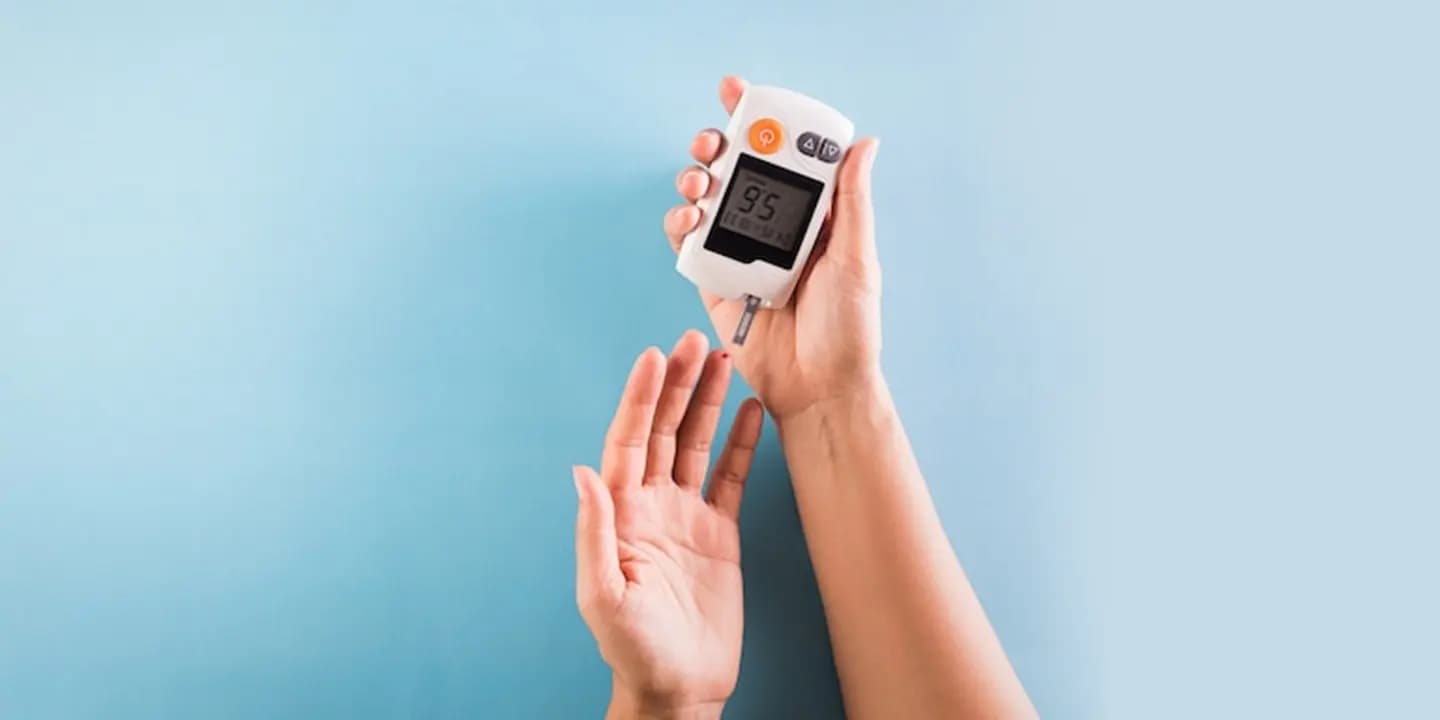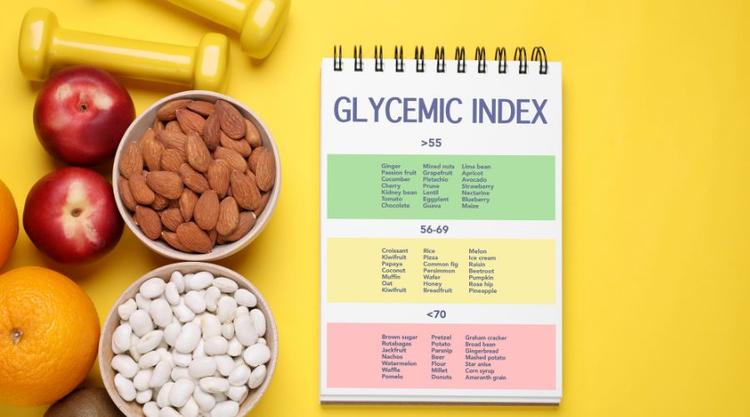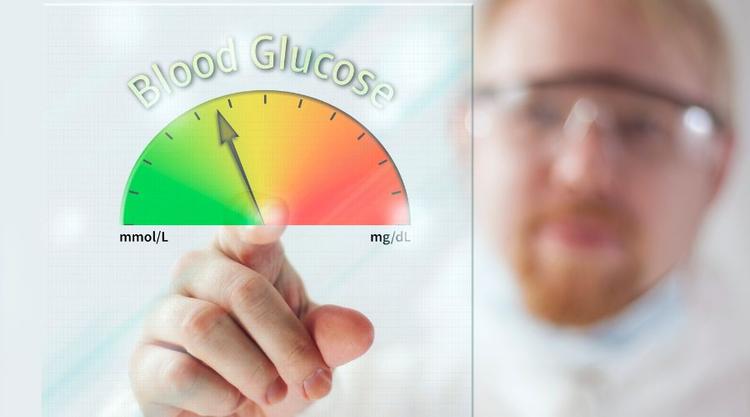Diabetes Tests, its diagnosis and treatment

Medically Reviewed By
Dr Divya Rohra
Written By Prekshi Garg
on Jun 2, 2022
Last Edit Made By Prekshi Garg
on Mar 16, 2024

Diabetes is a chronic metabolic disorder marked by consistently elevated levels of blood glucose. There are typically two instances that lead to this complication – either the pancreas isn’t producing enough insulin, or the cells aren’t utilizing the secreted insulin optimally.
Both situations lead to high blood glucose levels, which can impair both the normal physiological functions and the overall well-being of a person. Getting routine blood glucose monitoring is thus crucial for an early diagnosis and aligned treatment.
This article will explore more about the different types of diabetes tests, the diagnosis elements, and the treatment options.
What are the Different Types of Diabetes?
People tend to use “diabetes” as an umbrella term for elevated high blood glucose levels. However, you need to understand that there are two primary types of diabetes and two additional acute instances of diabetes that involve different treatment and symptom management.
Let us explore each of them in detail:
Type 1 Diabetes – also known as insulin-dependent diabetes, type-1 diabetes is a chronic metabolic disorder where the pancreas produces little to no insulin. It is considered an auto-immune disorder that directly destroys the insulin-producing beta cells in the pancreas, leading to less or no insulin in the blood.
Type 2 Diabetes – also known as insulin-independent diabetes, is generally caused by insulin resistance. The pancreas functions normally and produces enough insulin, but the cells don’t take up the insulin to metabolize the glucose molecules in the body. It is a long-term complication that requires oral diabetes medication or insulin injections to maintain normal glucose levels.
Prediabetes – in this condition, the blood glucose levels are high but not high enough to be considered a diabetic. It is generally a precursor to developing full-blown type-2 diabetes. People with insulin resistance showcase signs of prediabetes. If you are prediabetic, your doctor will advise introducing lifestyle changes and frequently monitoring blood glucose levels.
Gestational diabetes – is a type of diabetes commonly diagnosed in pregnant women during their first trimester. Women who develop gestational diabetes are at elevated risk of developing type-2 diabetes later. Also, getting an early diagnosis through the gestational diabetes test is crucial for the well-being of the developing fetus inside the womb.
Who should Get Regular Screening for Diabetes?
According to the American Diabetic Association, getting regular screening for diabetes is crucial for every person above 45. This is irrespective of whether you are at risk of diabetes or not.
You might need to get regular diabetes screening if:
- You have a body mass index (BMI) above 25
- You are above the age of 45
- You have had gestational diabetes
- You have been diagnosed with prediabetes
- You are experiencing symptoms of hyperglycemia
Regular screening enables an early diagnosis, which is crucial for the early administration of treatment for the patients.
How is Diabetes Diagnosed?
Irrespective of diabetes, the diagnostic tests are generally the same for them all. Your doctor is running the tests to check for elevated blood glucose levels.
Following are some of the diagnostic diabetes blood test:
Glycated Hemoglobin (HbA1C) Test
The A1C test is an ideal type-1 and type-2 diabetes test that analyzes and measures the average blood glucose levels over the past 2-3 months. The test analyzes the levels of glucose-attacked hemoglobin in the blood. This gives a rough estimate of whether the patient has diabetes or not.
An A1C level of less than 5.7% is considered normal. If your test results are between 5.7 to 6.4%, it indicates prediabetes, and if the levels are over 6.5%, it indicates the prevalence of diabetes.
Often, the A1C test levels might be inconsistent, and your doctors will prescribe further testing to rule out possible complications.
Random blood glucose test
This blood glucose monitoring test is done at a random time in the day, irrespective of whether you have eaten a complete meal or fasting or have eaten a snack.
The primary aim of random blood glucose is to check how your body metabolizes the glucose in the blood at any point throughout the day.
If your blood glucose levels are over 200 mg/dL, it indicates a risk of diabetes.
Fasting blood glucose test
This is a blood test that measures blood glucose levels after you fast for 8-10 hours. The blood sample for this test is generally collected first thing in the morning before eating your breakfast.
If your fasting blood glucose levels are over 126 mg/dL, it is a sign of diabetes. A level between 100-125 mg/dL in the fasting blood glucose test indicates the prevalence of prediabetes.
Post-prandial blood glucose test
Also known as the PP Blood glucose test, this monitors the blood glucose levels exactly two hours after a meal. The test analyzes the body’s insulin functions and how proactively it metabolizes the glucose in the body after a meal.
If the reports indicate levels between 140-199 mg/dL, it indicates diabetes. Levels less than 140 mg/dL are considered a normal reading.
Oral glucose tolerance test
In this blood glucose monitoring test, the patient must first give their fasting blood sample. Then they are given a sugary drink, following which the blood glucose levels are monitored periodically every two hours a few times.
Like the PP blood test, even in this, a level between 140-199 mg/dL is considered diabetes.
Type-1 Diabetes
Once the above tests are done and considered diabetic, your doctor will ask you about your family medical history. If anyone in your family has type-1 diabetes, you will need to undergo further testing to confirm a type-1 diabetes diagnosis.
- Your urine sample will be tested to check for the presence of a byproduct produced from muscle and fat tissue metabolism.
- Your blood sample will be tested for destructive immune system cells or antibodies associated with type-1 diabetes.
Getting a comprehensive diagnosis is crucial for administering an aligned diabetes treatment plan for the patient.
How can Diabetes be Treated?
Once you are diagnosed, your doctor’s first line of advice would be to alter your lifestyle habits. Diabetes management is heavily dependent on a person’s lifestyle and eating habits. If you are on heavy doses of medication but aren’t eating healthy or sleeping throughout the day, the condition will only worsen.
Lifestyle changes for Diabetes
There are two immediate lifestyle changes that you need to introduce for your diabetes management.
- Switch to a diabetes-friendly diet, including high-fiber foods, low glycemic index foods, leafy greens, fruits, vegetables, etc. Also, refined foods should be replaced with whole-grain foods.
- If you are leading a sedentary lifestyle, working at your desk, or sleeping on the couch, you need to change those habits. Include regular exercise like walking, yoga, stretching, cardio, etc.
Treatment options for Diabetes
Once you have your lifestyle and eating habits in check, the next line of treatment is to discuss the medications or treatment options with your doctors. This might involve:
Being on medications
Oral medications for diabetes include metformin composition or SGLT2 inhibitors that help regulate blood glucose levels and prevent further damage to the vital organs, for example, the kidneys.
Insulin injections
If you have type-1 diabetes or uncontrolled levels of type-2 diabetes, your doctor will prescribe insulin injections. Depending on your requirements, the insulin therapy can either be short-acting, rapid-acting, or long-acting insulin.
The insulin can’t be taken orally because the stomach acids will damage its composition. So, your doctor will prescribe it as an injectable.
Transplantation
This treatment option is reserved for people with type-1 diabetes. However, it is quite a rare form of treatment. The doctors transplant the faulty pancreas in the patient with a healthy one to promote recovery and normal functions.
Patients undergoing pancreas transplantation often have to be on immunosuppressants and experience many side effects in the long run.
Bariatric surgery
Although not suited for every type-2 diabetes patient, bariatric surgery is often kept as an accessory option for overweight or obese diabetes patients. Bariatric surgeries like gastric bypass are considered quite effective in lowering and regulating blood glucose levels in the long run. However, it is an expensive and risky procedure.
Prediabetes management
If you are diagnosed with prediabetes, your doctor will monitor the levels for a certain period before putting you on medications. Generally, a changed lifestyle and eating habits can reverse the risks of prediabetes without any medications. In some cases, you might be prescribed some oral medications like metformin to reduce the risks of insulin resistance in the body.
Frequently Asked Questions
-
How can you test for diabetes at home?
There are several home diabetes test kits for blood glucose testing that you can buy. The kit comes with testing strips, a monitoring machine, and a needle to prick the finger for the blood sample. The sample is then dabbed onto the testing strip and inserted into the machine to get a reading.
-
What is the most accurate test for diabetes?
Blood tests like A1C, fasting and post-prandial blood glucose tests, etc., are some of the most accurate tests for diabetes.
-
What is normal blood sugar by age?
The normal blood sugar for children is between 100-180 mg/dL while fasting. Similarly, for adolescents and adults, the normal levels are less than 100 mg/dL while fasting.
Conclusion
Diabetes is one of the fastest-growing diseases globally. With over millions of people getting diagnosed every year, you need to proactively take blood glucose monitoring seriously, especially if you are above 45. Getting timely diagnosis and treatment can avert many diabetes-related complications, including direct damage to the eyes and kidneys. So, it is advised to get tested regularly even if you aren’t at risk of developing diabetes.



